Location: Texas Panhandle
Challenge
- Limited water availability and hot, dry conditions limit cotton productivity.
Trial Goals
- Gain a deeper understanding of the economic impact of poor cotton quality on yield loss.
- Observe measurable improvements in upland cotton performance when using TerraFlow.
Trial Results
The following results were observed in the UpTerra-treated field, relative to the control.
- 6.69% increase in cotton yield
- $70.90 more per acre for cotton lint*
- $4 more per acre for cotton seed
- Improved lint quality for all sampled metrics
- Higher soil moisture efficiency
Trial Setup
- A split-field design was used to compare UpTerra-treated cotton and untreated cotton for agronomic performance.
- The control has nearly equal amounts of the varying soil types, while the treated soil only has 3.85 acres of the fine sandy loam and 13.55 acres of the clay loam. 77.43% of the treated field will have an advantage of higher water-holding capacity and nutrient retention, while only 47.31% of the control will have the same advantage.
- TerraFlow® devices were installed directly in the irrigation system to enhance water use across the treated side of the field. The units use a patented process that organizes and enhances irrigation water via simultaneous vortexing and frequency transmission, aimed at improving soil infiltration and plant hydration.
- TerraNet® frequency transmitters were deployed to deliver targeted signals designed to support soil and plant health. These frequencies, transmitted via the irrigation system, were intended to stimulate biological processes such as nutrient uptake, microbial activity and plant resilience throughout the growing season.
- Planting populations and dates, irrigation schedules and harvest dates remained consistent between control and treatment fields.
- Soil moisture sensors were installed at various depths to monitor moisture availability in both the control and treated sides of the field. Seasonal moisture data were analyzed to evaluate plant and soil responses to different water conditions, including a comparison of the percentage of available moisture at each depth.
- Although the soil types in the field varied, the moisture sensor probes were placed in areas with the same soil type, allowing for comparable readings.
- Each side of the field was harvested separately, with gin data used to compare cotton yield.
- Statistical analyses were conducted on all applicable data, including a paired T-test and Least Significant Difference analysis.
Yield Results
Based on the gin data, the UpTerra treatment yielded 6.69% more pounds per acre of harvested cotton lint compared to the control portion of the field.
| Pounds Per Acre | Percent Change | |
| UpTerra Treatment | 1128.91 | 6.69% |
| Control | 1058.11 |
Income Results
The UpTerra-treated crop received a higher grade due to its better-quality cotton and, based on loan rates provided at the gin, brought in $70.90 more per acre than the control.
| Income per acre | UpTerra advantage per acre | |
| UpTerra Treatment | 801.53 | $70.90 |
| Control | 730.63 |
Quality Metrics
| Treated | Control | Percent Difference | |
| Trash | 3.9 | 4.8 | ↓ -18.75% |
| Color | 77.9 | 77.3 | ↑ 0.78% |
| Leaf | 3.1 | 3.7 | ↓ -16.22% |
| Staple | 37.5 | 37.1 | ↑ 1.08% |
| Micronaire | 4 | 3.9 | ↑ 2.56% |
| Strength | 31.6 | 31.1 | ↑ 1.61% |
| Length (1/100s inch) | 117.5 | 116.1 | ↑ 1.21% |
| Uniformity | 80.4 | 79.6 | ↑ 1.01% |
Plant Nutrition Analysis
Foliar nutrients were applied to control and treatment crops at critical growth stages. Tissue sampling was conducted to determine differences in nutrient levels between control and treatment plants.
TerraFlow-treated cotton consistently showed higher levels of zinc, manganese, boron and magnesium. This suggests that TerraFlow water helps plants absorb nutrients from foliar sprays.
Notably, even when fertilizer rates were lowered, the treated side still maintained adequate nutrient levels, suggesting that growers may reduce fertilizer costs without sacrificing yield or quality. Key nutrient insights are highlighted below.
- Enhanced Nitrogen Utilization
TerraFlow water-treated plants showed lower levels of nitrate and ammonium remaining in the sap, hinting at more efficient nitrogen uptake. This can translate to reduced fertilizer needs and a lower risk of nutrient leaching. - Improved Macronutrient Availability
Essential nutrients like phosphorus, potassium, magnesium, calcium, and sulfur appeared more abundant in the TerraFlow-treated crop, indicating better nutrient solubility or plant uptake during a crucial growth stage (mid-bloom). This can support improved boll setting and overall plant health. - Boosted Micronutrient Levels
Micronutrient levels—particularly manganese, zinc and boron—were higher under UpTerra treatment, suggesting enhanced mobility and assimilation of key trace elements. This is critical for enzyme activation, flowering and fiber quality. - Stable Impact on Sodium, Molybdenum, and Chloride
No notable changes were observed in sodium, molybdenum or chloride, implying these elements remained balanced and were neither excessively depleted nor accumulated under UpTerra treatment.
Soil Moisture
Although soil types vary in different parts of the field, soil probes were placed in areas with consistent soil types. Thus, all the data is comparable because the soil types have the same water-holding capacity. Soil moisture data is summarized below.
- Shallow Depths (10–14 inches)
At 10 inches, a highly significant result (p<0.05) underscores the treatment’s pronounced impact on moisture retention in the near-surface zone, which is critical for early root development and reducing initial water stress. At 14 inches, a highly significant difference (p<0.05) indicates sustained benefits deeper into the root zone, offering better moisture availability during the early vegetative stage. - Mid-Depths (22–30 inches)
At 22 inches, there is no statistically significant difference (p>0.05), suggesting that at this specific layer, soil moisture converges between treatment and control, possibly due to soil structural factors or water redistribution patterns. In contrast, 30 inches shows a substantial difference (p<0.05), highlighting that the treatment continues to bolster water reserves at deeper rooting depths, reducing irrigation requirements and buffering against mid-season dry spells. - Deeper Depths (38–46 inches)
At 38 inches, no significant difference (p>0.05) is observed, indicating that moisture retention at this depth may be less influenced by the surface-level management. However, 46 inches reveals a highly significant effect (p<0.05), suggesting that the treatment ultimately improves water storage even in the lower soil layers, providing a valuable moisture reserve for late-season growth.
Key Trial Takeaways
- The results indicate that the UpTerra treatment has a positive impact on cotton yield and quality, nutrient uptake and soil moisture distribution, resulting in a $70 per acre income increase.
- Better moisture availability in the soil helped reduce plant stress during drought conditions and could reduce irrigation costs.
- This trial suggests that UpTerra technologies can help cotton growers achieve higher yields and better water management, improving overall profitability potential.
| Agronomic benefit | Economic benefit | Operational benefit |
| Better nutrient uptake | Better ROI on fertilizer investment | Less synthetic fertilizer required |
| Improved crop quality | Superior grading/premium pricing | Better marketing opportunities |
| Improved yield | Higher revenue per acre | Reduced production cost/lb of cotton |
| Improved soil moisture efficiency | Less water required/lower costs | Resource conservation and environmental risk mitigation |
Related Content
Mastering Cotton Irrigation: A Complete Guide
Why Your Crops May Be Struggling: It Might Not Be What You Think
The True Cost of Farm Irrigation — and How New Technologies Can Help
* Based on loan rates provided by the gin



